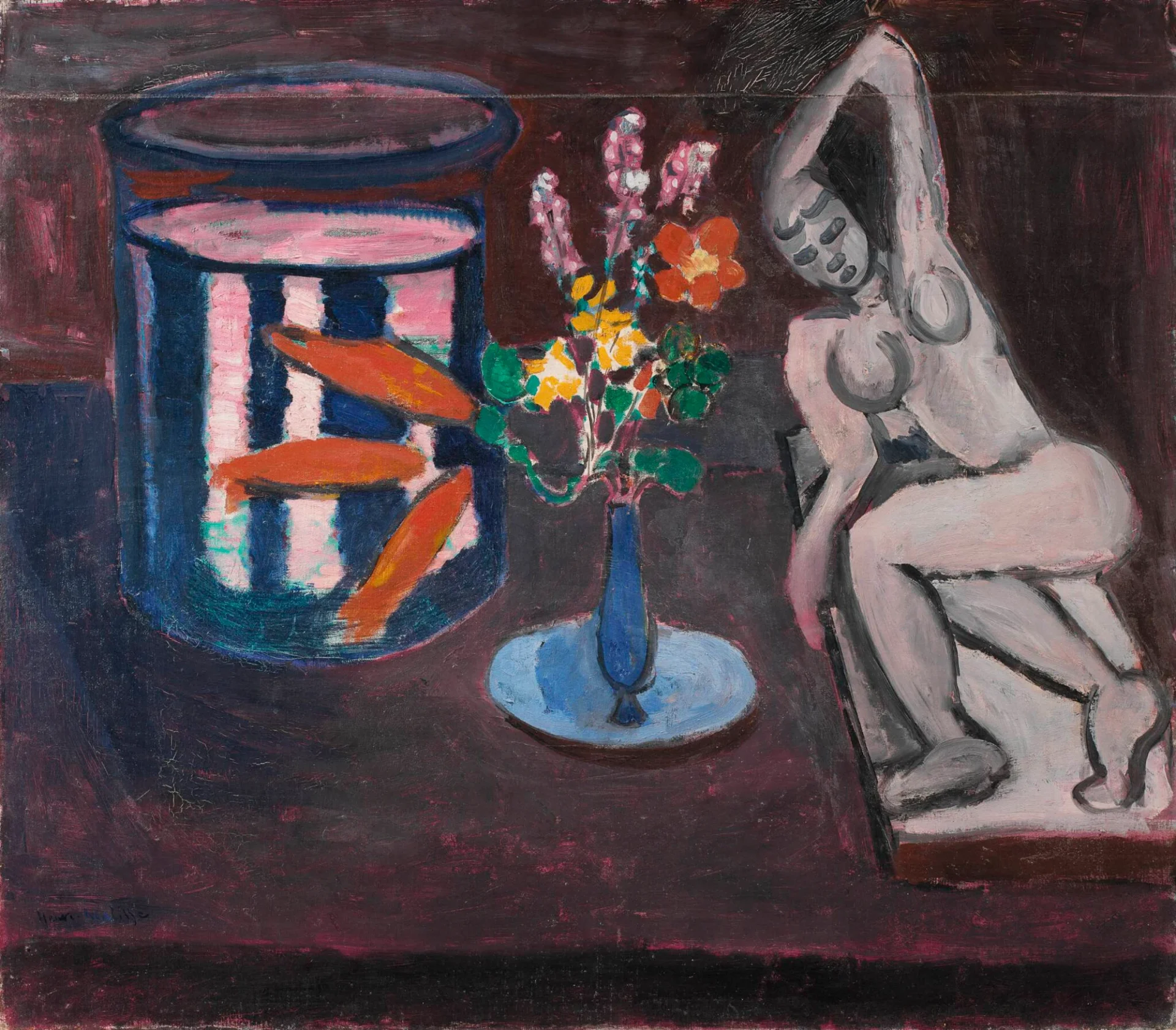French artist Henri Matisse, widely celebrated as a leading figure in modern art, is perhaps best known for his colorfully dynamic and emotive works. Among his vast array of creations, Matisse’s series of goldfish paintings stands as some of his most revered pieces. An intriguing question has often been raised about these works: what inspired the incorporation of goldfish in Matisse’s artistry?
After a fruitful winter of painting in Tangier, Matisse returned to his home studio in Issy-les-Moulineaux, outside Paris, in April 1912. It was here that the iconic Goldfish (Les poissons rouges) was born, the first in a series of eleven paintings featuring the vibrant fish, an unusual theme for European art at the time.
While Matisse once suggested that the inspiration for his goldfish came from observing Moroccans staring into goldfish bowls, this claim is not universally accepted. Contrary to this idea, evidence from Matisse’s time in Tangier does not support the presence of goldfish as a common sight, making the Moroccan origin of the goldfish motif questionable.
Interestingly, the image of goldfish has long been prevalent in Chinese art, tracing back to the Neolithic period. In Taoist tradition, goldfish, particularly the golden carp, are considered symbols of harmony with the environment, embodying happiness and tranquility. The fish were often featured on ancient Chinese scrolls and ceramics, reflecting their cultural significance.
Moreover, goldfish were domesticated in China, with their colorful scales first emerging during the Jin dynasty. The ornamental breeding of goldfish was popularized during the Tang dynasty, leading to their eventual introduction to Europe in the 17th century.
Around the same time that Matisse started featuring goldfish in his art, Paris was experiencing a surge of interest in Chinese art. Notable exhibitions introducing Chinese art took place at the Bernheim-Jeune and Durand-Ruel galleries, and Matisse’s own gallery. The exhibitions drew attention from the city’s art community, including Marcel Proust and Guillaume Apollinaire, the latter who noted that “cyprinoids are in fashion this year because of the Chinese exhibitions.”
This period saw the blossoming of Japonisme, a French interpretation of Far Eastern aesthetics that deeply impacted French arts and crafts. However, Chinese art was relatively less known, which further intensified its intrigue and appeal when it was exhibited.
Among Matisse’s goldfish paintings, Goldfish and Palette and Interior with a Goldfish Bowl stand out as profound reflections of the artist’s isolation during World War I. The series culminated with three final paintings in Nice featuring model Henriette Darricarrère observing a bowl of goldfish, signifying a closing chapter to this exotic motif.
While the precise origin of Matisse’s goldfish series remains uncertain, the amalgamation of Moroccan and Chinese influences offers a fascinating perspective into the artist’s creative process. As Zhou Dongqing’s ancient scroll painting inscription beautifully articulates, “We can only take an ideal and make it into a painting. To probe the subtleties of the ordinary, we must describe the indescribable.” Perhaps, this sentiment mirrors Matisse’s own exploration with his iconic goldfish series.
READ MORE:
